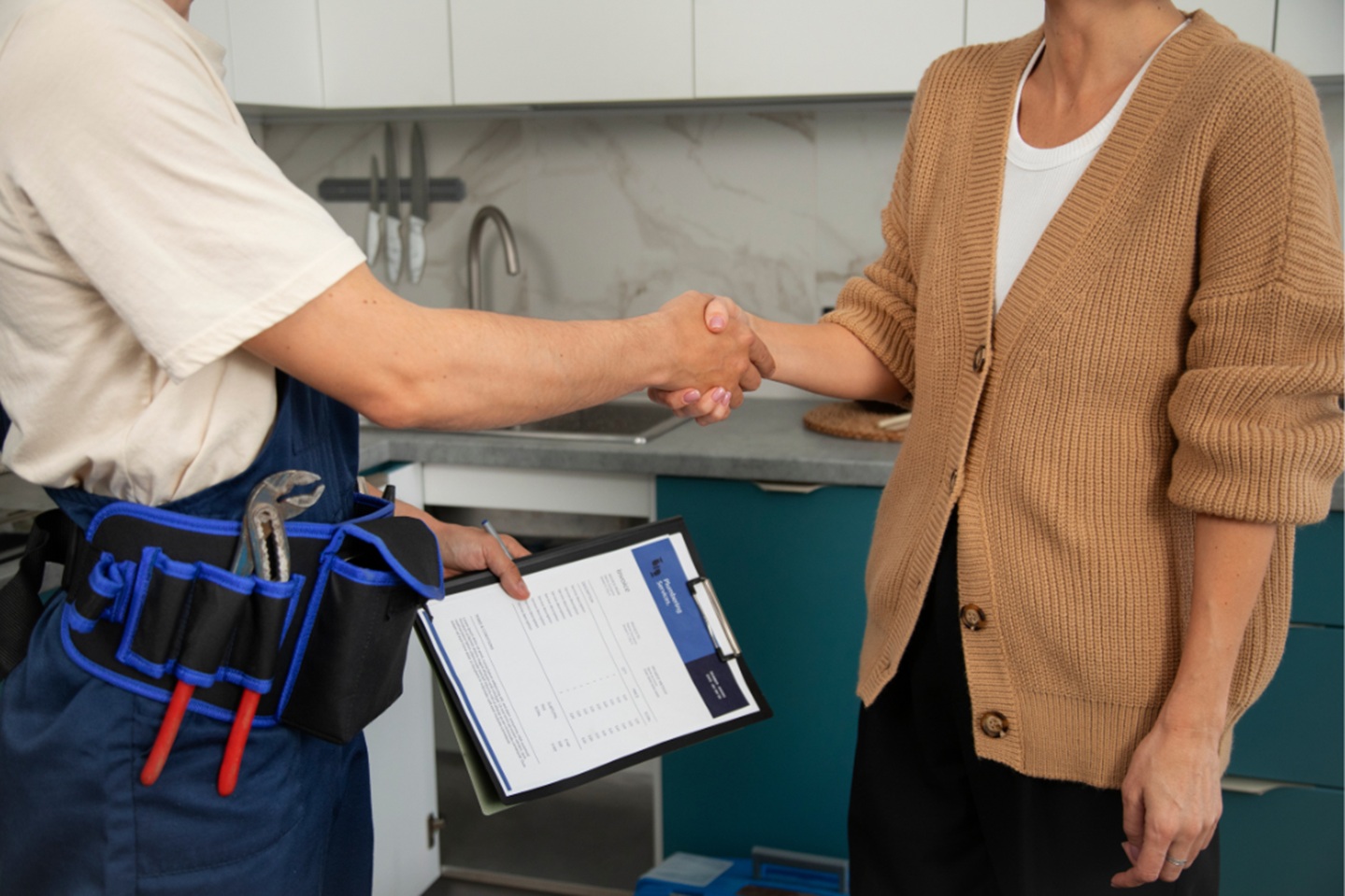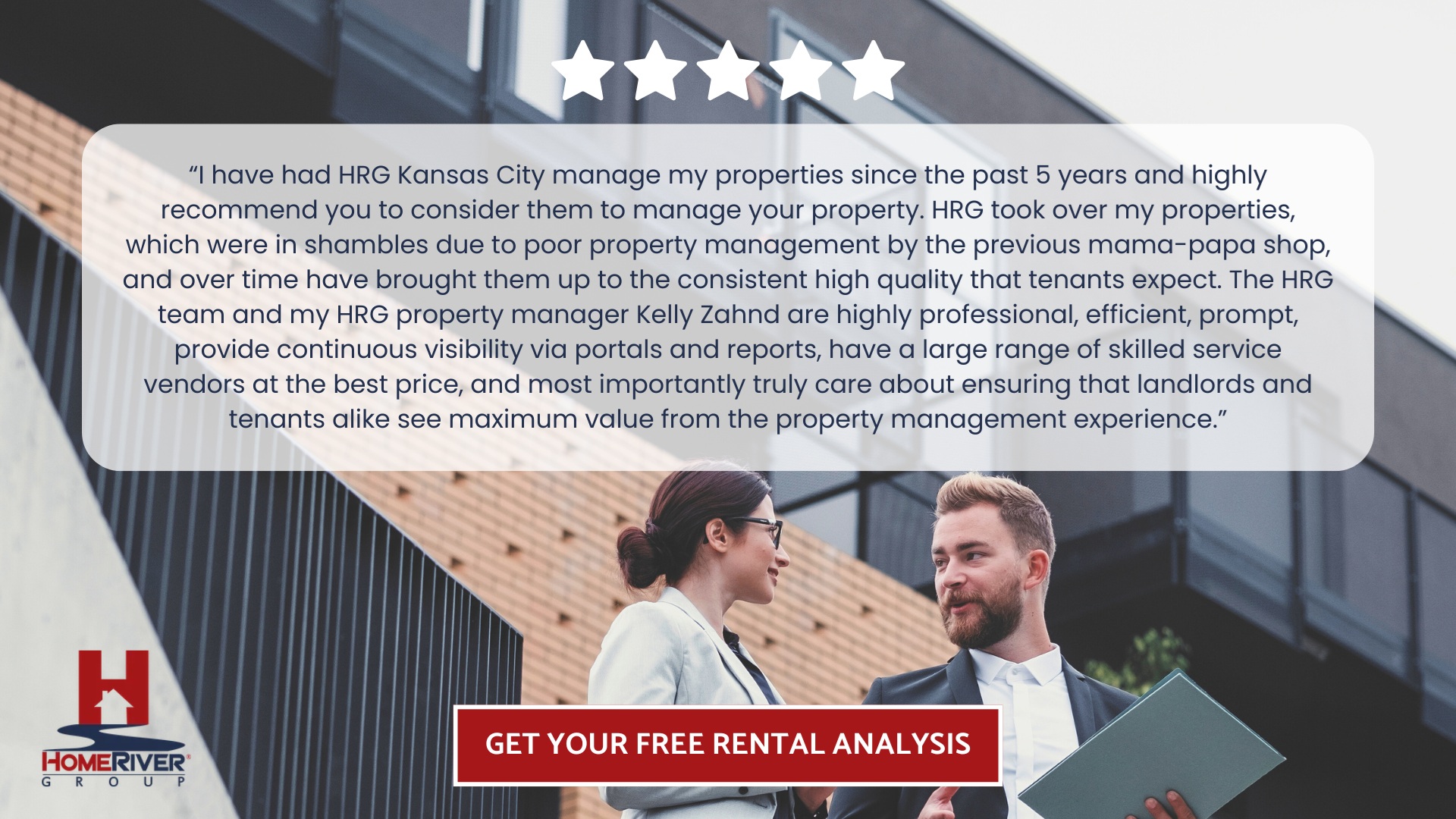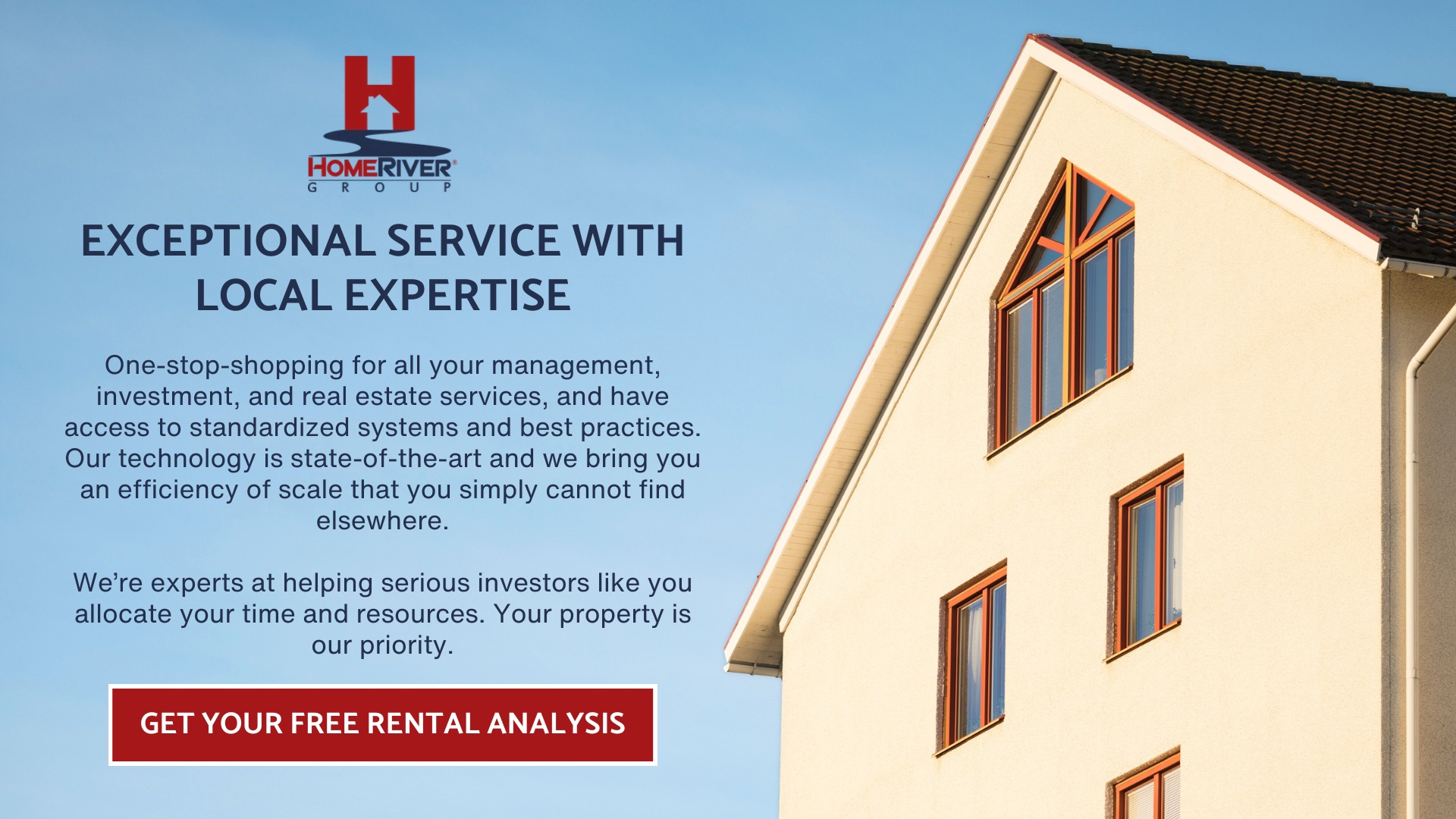
At HomeRiver Group, we manage one of the most diverse rental portfolios in the country, ranging from single-family homes to multifamily communities. Our nationwide platform is powered by local expertise, ensuring every property is handled precisely. We’ve built strong vendor partnerships, streamlined reporting systems, and compliance protocols that owners can rely on. By combining scale with service, we consistently deliver value, reduce vacancies, and protect the long-term performance of every property we manage.
Rental property maintenance is pivotal in keeping tenants satisfied and preserving property value. Owners prioritizing timely repairs, preventive upkeep, and clear communication with tenants reduce turnover and avoid costly emergencies. A strong maintenance plan reflects professionalism and attention to detail, from HVAC servicing to landscaping. For property owners, effective rental property maintenance safeguards investments and strengthens tenant relationships, ensuring consistent income and long-term profitability in any market.
In this blog, we will explore practical strategies for preventive maintenance, tips for setting clear responsibilities with tenants, and best practices for building strong vendor relationships that keep properties profitable and tenants happy.

Preventive Maintenance: The Cornerstone Of Asset Protection
Preventive maintenance might not grab headlines, but it is a quiet force that keeps rental properties running smoothly and tenants satisfied. Regular inspections, proactive repairs, and routine servicing of essential systems help prevent minor issues from spiraling into costly emergencies. This proactive approach protects the physical asset and preserves cash flow by minimizing unexpected expenses and property downtime.
Financial Advantages Of Routine Care
Implementing a solid preventive maintenance schedule provides clear financial advantages for property owners. Routine HVAC servicing, gutter cleanings, pest control, and landscaping upkeep reduce the risk of expensive damage and extend the lifespan of key property systems. Well-maintained homes see fewer complaints, lower vacancy rates, and improved tenant retention, directly impacting profitability.
Tenant Perception And Comfort
Tenants also notice when a property is well cared for. Small details like fresh paint, working appliances, and a leak-free environment send a strong message: their comfort and safety matter. When maintenance teams quickly address issues identified during inspections, it builds trust and fosters positive long-term relationships.
Strategic Action For Long-Term Gains
Committing to preventive maintenance is about strategic action. By staying ahead of problems, property owners maximize their return, and tenants enjoy a hassle-free living experience. This is a win-win that anchors both profitability and satisfaction.
Clear Tenant vs Owner Maintenance Responsibilities
Defining maintenance responsibilities is essential to maintain positive tenant relationships and prevent disputes that can erode trust. Every well-structured lease should spell out, in clear language, which tasks fall to the tenant and which obligations remain with the owner.
Owner Responsibilities
Owners are typically responsible for repairs and maintenance related to the property’s habitability and structural integrity. This includes major HVAC, plumbing, electrical, roofs, and exterior siding systems. Landlords are also expected to ensure that the appliances provided by the property (such as refrigerators and ovens) are kept in working order. Statutes in most states reinforce these obligations, so regular inspections and prompt responses to maintenance requests are good business and legal requirements.
Tenant Responsibilities
Tenants generally handle basic upkeep and cleanliness. Routine tasks like replacing light bulbs, changing HVAC filters (if accessible and specified in the lease), maintaining yard areas, and properly disposing trash typically fall in the tenant’s domain. It’s also the tenant’s duty to notify the owner promptly of any issues or damage that require more significant repairs.
The Importance Of Documentation
Setting these responsibilities down in the lease and providing tenants with a clear move-in checklist mitigates confusion down the road. It helps both parties understand what is expected and the process for reporting and managing maintenance needs. Thorough documentation ensures accountability, reduces surprises, and keeps the rental experience running smoothly for everyone involved.
Seasonal Checklists To Avoid Costly Repairs
Staying ahead of maintenance involves responding to problems as they arise and anticipating potential issues before they become expensive headaches. Establishing detailed seasonal checklists is a crucial strategy for keeping rental properties in top shape and tenants satisfied year-round.
Spring: As temperatures rise, so does the need to inspect roofing for loose shingles and blockages in gutters. Check for winter damage to exterior paint and siding. Test irrigation systems to ensure landscaping flourishes, and service HVAC units before the first heatwave.
Summer: Turn attention to pest control and monitor for termite or ant activity signs. Make sure windows and doors seal properly to keep cooling efficient. This is a prime opportunity to inspect decks, patios, and outdoor lighting for necessary repairs.
Fall: Prepare for colder months by cleaning chimneys, checking attic insulation, and sealing exterior gaps. Flush water heaters and inspect plumbing for early signs of freezing risks. Swap out furnace filters and test smoke and carbon monoxide detectors.
Winter: Keep pathways clear of ice and snow to reduce liability. Regularly test heating systems and look for drafts or leaks around windows. Ensure indoor plumbing is protected against freezing, and remind tenants about proper ventilation to prevent moisture buildup.
By systematically addressing these items each season, long-term property costs are reduced, emergency repairs become less frequent, and renters benefit from a safer, more comfortable living environment.
Choosing And Vetting Reliable Service Vendors
Selecting the right vendors for maintenance tasks is critical to effective rental property management. Thoughtful vendor selection helps ensure service requests are handled quickly and professionally, keeping tenants satisfied and reducing long-term costs.
Here’s a closer look at choosing and vetting reliable service partners:
Evaluating Reputation And Track Record
Start by seeking out vendors with strong reputations in the local market. Online reviews, testimonials, and recommendations from other property owners provide valuable insight. Once you’ve compiled a shortlist, verify the vendors’ licenses, insurance, and bonding. This is about meeting legal requirements and protecting your investment from unnecessary risk.
Prioritizing Clear And Consistent Communication
Strong communication should be non-negotiable. Reliable vendors respond promptly, provide detailed work estimates, and maintain transparency from scheduling to invoicing. Request references from previous clients and follow up on them to learn how each vendor performs under pressure or handles unexpected issues.
Testing Vendors With Smaller Projects
Finally, don't overlook the value of trial assignments. Assign smaller, lower-risk tasks before trusting a vendor with larger or more sensitive projects. Collect feedback from tenants about their interactions with maintenance personnel, as tenant experience is just as crucial as job quality.
Building Long-Term Partnerships For Stability
By implementing a thorough vetting process, property managers can build a roster of dependable service vendors who maintain high standards and respond swiftly when issues arise. Beyond immediate repairs, cultivating long-term vendor partnerships creates stability, ensures consistent pricing, and builds mutual trust. Establishing service-level agreements and reviewing vendor performance regularly keeps standards high and prevents lapses in quality. Strong vendor relationships ultimately contribute to happier tenants and profitable properties.
Measuring Maintenance KPIs To Protect NOI
Measuring maintenance performance isn’t optional when Net Operating Income (NOI) is at stake. Property owners and managers create a roadmap for tenant satisfaction and profitability by tracking the most critical maintenance KPIs.
Response Time: Fast maintenance response is a baseline expectation for residents. Monitoring average work order response and resolution times delivers clear feedback about team efficiency. High-performing properties typically resolve standard requests within 24-48 hours.
First-Time Fix Rate: Fixing an issue on the first visit minimizes frustration and cost. A low first-time fix rate signals supply or staff training gaps that impact tenant happiness and inflate expenses.
Work Order Volume: Trends in maintenance requests can reveal larger systemic issues, from aging infrastructure to recurring pest problems. Tracking spikes in volume helps prioritize preventative efforts and avoid expensive emergency repairs.
Maintenance Cost Per Unit: Efficiency isn’t just about speed; cost control matters. Calculating maintenance expenses per-unit basis allows for better forecasting and flags anomalies before they escalate.
Preventative vs. Reactive Maintenance Ratio: Preventive maintenance is one of the best tools for protecting cash flow. A high ratio of reactive (or emergency) requests often indicates deferred maintenance, which increases turnover and repairs and ultimately erodes NOI.
Setting targets for each KPI and reviewing them regularly is crucial. Consistent measurement enables data-driven decisions, supporting higher retention and stronger bottom lines.
Final Thoughts
Consistent, high-quality rental property maintenance is non-negotiable for property owners who prioritize tenant satisfaction and long-term profitability.
At HomeRiver Group, we understand that every property is unique and that success depends on meticulous attention to detail, strong communication, and responsive service. Our multifaceted, national platform pairs local market expertise with robust systems, so you can feel secure knowing your investments are in capable hands.
Happy tenants become long-term tenants, translating to minimized vacancy rates and steady cash flow. Efficient maintenance protects your property’s value and fosters trust and transparency between owners and residents. With HomeRiver Group, clients benefit from a unified approach: proactive repairs, comprehensive inspections, and streamlined vendor management, all designed to reduce surprises and optimize returns.
If you’re ready to simplify operations, maximize asset value, and satisfy your tenants, we support your goals with exceptional service and proven local expertise.
Read also:
What Is Prorated Rent: A Simple Guide For Tenants And Landlords
Cap Rate Formula: How To Calculate Real Estate Return On Investment
What Happens If You Break A Lease: Tenant And Landlord Implications Explained
Frequently Asked Questions About Rental Property Maintenance
What are the basics of rental property maintenance?
Rental property maintenance covers routine, preventive, and emergency repairs to keep a property safe and appealing. At HomeRiver Group, we prioritize regular inspections, swift maintenance, and clear communication with tenants. This ensures everything from HVAC systems to locks and plumbing runs efficiently, preserving property value and tenant satisfaction.
How do maintenance schedules impact tenant satisfaction?
Consistent maintenance scheduling is fundamental for tenant retention. Tenants expect their homes to be comfortable and functional. Maintenance issues are caught early by setting regular service intervals for essentials, like HVAC checks and plumbing inspections, minimizing resident disruptions and creating a dependable living environment.
What are common maintenance issues in rentals?
Rental properties often face recurring maintenance challenges, including leaky faucets, clogged drains, HVAC problems, and appliance failures. Exterior concerns like roof leaks or landscaping upkeep are also frequent. HomeRiver Group addresses these issues proactively to reduce costly emergencies and minimize tenant inconvenience.
How can I create an effective maintenance request system?
An effective maintenance request system is clear, accessible, and responsive. We recommend an online portal where tenants can submit requests, track progress, and communicate with the management team. A streamlined system keeps tenants informed and helps prioritize urgent repairs, supporting a hassle-free experience.
Should landlords handle maintenance themselves or hire professionals?
The choice between DIY and professional maintenance depends on the complexity of the repair. While minor fixes may be manageable, licensed professionals are best for electrical, plumbing, or HVAC work. HomeRiver Group offers a network of vetted contractors, ensuring all repairs meet safety standards and local regulations.
What repairs are landlords legally required to address?
Landlords are obligated to maintain habitable living conditions. Legal requirements vary by location but commonly include fixing heating, plumbing, and electrical problems and addressing structural concerns. HomeRiver Group stays updated with local housing codes to guarantee compliance and protect owners and tenants.
What is preventive maintenance for rental properties?
Preventive maintenance involves regularly scheduled tasks intended to prevent issues before they arise. Examples include HVAC tune-ups, gutter cleaning, and pest inspections. Our national platform enables systematic preventive maintenance schedules, reducing emergency repairs and enhancing long-term property value.
How quickly should maintenance requests be handled?
Response times matter. Urgent concerns, such as gas leaks or major water damage, should be addressed immediately, typically within hours. Non-urgent issues may be resolved within a few days. At HomeRiver Group, we emphasize fast, reliable response times to maximize tenant comfort and maintain property standards.










